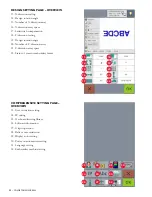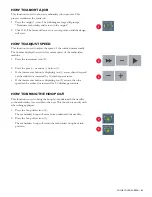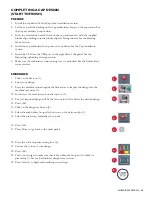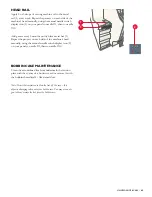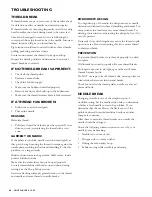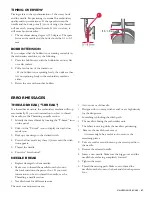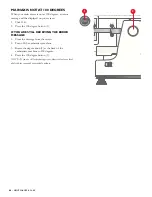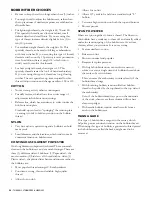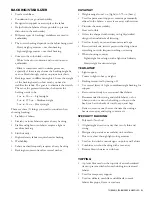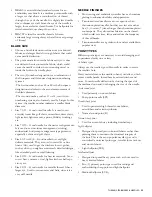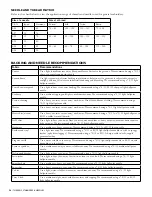
46
– MAINTENANCE & CARE
TROUBLESHOOTING
THREAD BREAK
If thread breaks occur on just some of the needles, check
for defective needles or needles not inserted properly.
If thread breaks are occurring frequently on all the sewing
head’s needles, then hook timing needs to be corrected.
Check the thread path to make sure it is following the
correct path from the thread cone to the needle. Incorrect
thread tensions will give you thread breaks.
Tight tension could lead to missed stitches, thread breaks,
pulling, puckering and thread stress.
Loose tension causes the thread to pile up and loop.
Inspect the needle position and determine if an actual
thread break has occurred.
IF NO THREAD BREAK IS APPARENT:
• Check all the thread paths.
• Perform a manual trim.
• Check the bobbin supply.
• Make sure the bobbin is installed properly.
• Remove any lint or dirt build-up in the bobbin case.
• Make sure the thread trimmer knife is fully retracted.
IF A THREAD HAS BROKEN:
• Follow the correct thread path.
• Thread the needle.
REASONS
Defective thread
• Pull thread until the defective part has passed. If that
does not work, try replacing the thread with a new
cone.
GARMENT OR FABRIC
If the fabric is too thick, needles tend to bend slightly as
they pass through, causing the thread to scrape against the
needle plate, resulting in the thread shredding. To fix this
problem, try a larger needle.
Hidden obstructions in the garment: bulky seams, inside
pockets, hidden buttons.
Make sure the embroidery hoop is hooped properly.
Loosely framed fabric will bounce up and down during
sewing. See the Hoop Fabric section.
Excessive backing will apply greater friction to the thread
and needle and cause thread or needle breaks.
EMBROIDERY DESIGN
Too high density of thread in the design can cause needle
deflection, which leads to thread shredding and breaks. Too
many stitches in a small area can cause thread breaks. Try
deleting short stitches or increasing the design by five (5) to
ten (10) percent.
Extremely short stitch lengths may cause the thread to pile
up in one area. Known as nesting, this issue causes thread
to shred and break.
PREVENTION
To prevent thread breaks, store threads properly in a dark,
cool place.
Old threads not stored properly will cause thread breaks.
Prolonged exposure to air, light, age and heat will make
threads become brittle.
Do NOT use tape to tie off thread ends, since tape leaves a
stick residue that causes friction and breaks.
Check for burrs in the thread guides, needle eye, thread
plate and hook.
NEEDLE BREAK
Changing a needle is one of the simplest types of
troubleshooting. Set the needle aside while you determine
whether a fresh needle corrects the problem. If you
determine that the needle was the likely cause of the
problem, discard in an old medicine bottle or another
sharp-safe container.
After three consecutive thread breaks on a needle, the
needle should be changed
Check the following common reasons to see why your
needle(s) may be breaking.
• Needle is worn out or old
• Designs with too many stitches
• Hitting the embroidery hoop
• Fabric moving while needle is penetrating

